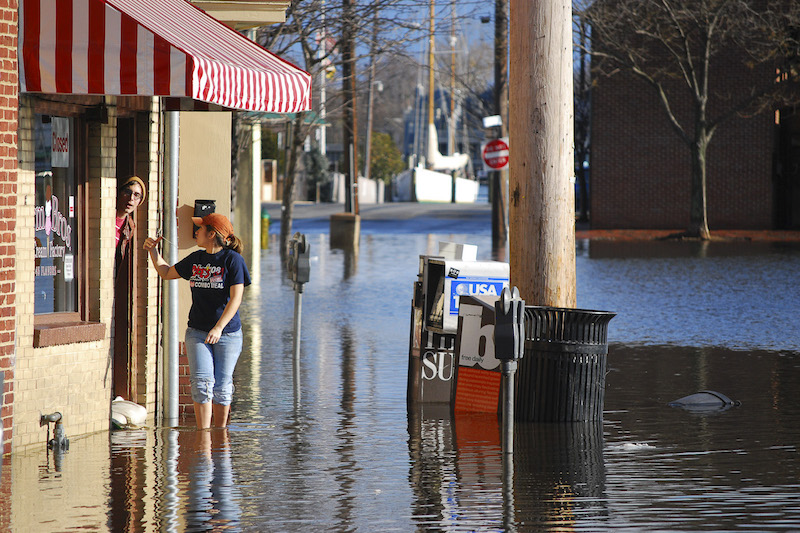
Coastal communities suffer economically from frequent high-tide flooding and the impact is expected to worsen as sea levels rise, making them more frequent.
Researchers from Stanford University quantified the economic impact of frequent high-tide flooding in Annapolis, Maryland, a coastal community in the US. The findings were published in the journal Science Advances (citation below).
Using a novel approach the researchers estimated the effects of high-tide flooding on local economic activity in Annapolis.
Stanford graduate student Miyuki Hino and her colleagues found that downtown Annapolis lost 3,000 visits in 2017 due to high-tide flooding.
This loss in visits cost the area between $86,000 and $172,000 in revenue. In 2017, Annapolis experienced 63 high-tide flooding days.
“Small businesses in downtown Annapolis rely on visitors. By measuring the extent of the impact of flooding, we can understand the business case – how sea level rise is already impacting businesses’ experiences and profits,” said Samanthe Belanger, a co-author and Stanford MBA student at the time of the study.
High-tide flooding used to be a somewhat rare occurrence. However, over the past 20 years the number of high-tide flooding days has increased about 60%, according to data from the National Oceanic and Atmospheric Administration (NOAA).
The average number of high-tide flooding days across 27 locations in the US went up from 2.1 days per year in the late 1950s to 11.8 during 2006-10.
By 2035, around 170 coastal communities are forecast to have 26 high-tide flooding days a year.
The researchers used records of parking transactions in a parking lot in the downtown district of City Dock from May 2016 to November 2017 to track parking ticket sales. Each hour was matched to hourly tidal and precipitation data. This data allowed the team to calculate the impact of high-tide floods in City Dock.
In 2017, the loss to City Dock businesses because of flooding was less than 2 percent of annual visitors.
However, as sea levels rise this could get worse. The study projects that with 3 inches of additional sea level rise, high-tide floods would reduce visits by 3.6% (3.2 to 4.0%). With 12 inches of additional sea level rise, high-tide floods would reduce visits 24% (19 to 28%).
“As global temperatures and sea levels rise, high-tide flooding becomes more frequent,” said Miyuki Hino. “For coastal businesses, that means more days when customers might not be able to get to their store. Even though most floods only last for a few hours, their impacts can add up.”
“So often we think of climate change and sea level rise as these huge ideas happening at a global scale, but high-tide flooding is one way to experience these changes in your daily life just trying to get to your restaurant reservation,” Hino added.
Katharine Mach, a senior research scientist at Stanford’s School of Earth, Energy & Environmental Sciences and a co-author on the study, said:
“In Annapolis, as in many places, high-tide flooding is happening right in the heart of things. The historic district is a favorite among locals and tourists alike. It is now frequently flooding,”
Mach added: ”What we’re finding is something many local leaders in coastal cities already know: the waters are rising up and surging into daily life. So are the costs.
”Understanding the impacts for people today – at large and small scale – is an essential starting point for making smart adjustments to the risks.”
Citation
“High-tide flooding disrupts local economic activity” Miyuki Hino, Samanthe Tiver Belanger, Christopher B. Field, Alexander R. Davies and Katharine J. Mach. Science Advances 15 Feb 2019: Vol. 5, no. 2, eaau2736 DOI: 10.1126/sciadv.aau2736
